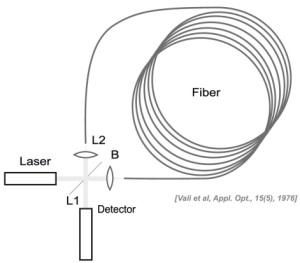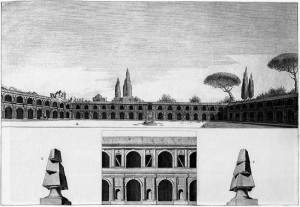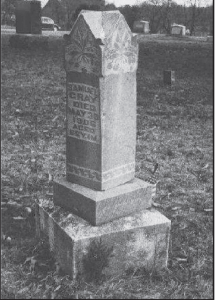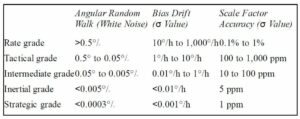Sagnac effect
 1913 Georges Sagnac used interferometer for rotation detection where the two directions within the rotating loop see slightly different optical paths. Sagnac’s original experiment used a loop about 1m square and detected fringes when the loop rotated at a few times a second.
1913 Georges Sagnac used interferometer for rotation detection where the two directions within the rotating loop see slightly different optical paths. Sagnac’s original experiment used a loop about 1m square and detected fringes when the loop rotated at a few times a second.
The Sagnac interferometer measures rotation with respect to the fixed star in the galaxy, rather than with respect to the rotating Earth’s surface.
The observed fringe shift does not depend on:
- the presence of a medium in the path of the beam,
- the shape of surface area S,
- the location of the center of rotation.
Today Sagnac effect is used for construction two kinds of optical devices: FOG – Fibre-Optic Gyroscope and FORS – FIbre-Optic Rotational Seismometer.
FOG is optical gyroscope uses in navigation system where detected rotation rate (after time integration) is presented as angle changes in suitable axis (Pitch, Roll, Yaw -see sceme below).
Because FOG used the light propagates in optical fibre with optimised lenght and loop radius, it is possible to construct device suitable for any Inertail Navigation system (INS) with main parameter defined by INS grade – see below [H. C. LeFevre The Fiber-Optic Gyroscope, 2nd ed. Artech House, 2014],
FORS is device uses in rotational seismology. The observations of strange, rotational deformations of architecture structures which appear after Earthquake have become the major motivation for constructing such device. These observations do not have obvious theoretical explanation. There are many theoretical theories and considerations, nevertheless they are not confirmed by experimental data. In the figure below we present two instances of such atypical deformations. Figure 1a presents the rotational deformation of the two ornamental obelisks of the Charterhouse of Serra San Bruno in Calabria, Italy after the Calabrian Earthquake in 1783 [Ferrari G (2006). Note on the historical rotation seismographs. In: Teisseyre R, Takeo M, Majewski E (eds) Earthquake source asymmetry, structural media and rotation effects. Springer, Berlin, 367-376]. In Figure 1b one can see the rotation of the monument of George Inglis (erected in 1850 at Chatak, India) as observed by Oldham (1899) after the 1897 Great Shillong Earthquake [William H. K. Lee, Heiner Igel, and Mihailo D. Trifunac (2009). Recent Advances in Rotational Seismology, Seismological Research Letters, Volume 80, Number 3].
 |
 |
| a) | b) |
Figure 1. Example of the observation of rotational deformations after the Earthquake: a) The deformation of two ornamental obelisks of Charterhouse of Serra San Bruno in Calabria, Italy after the Calabrian Earthquake in 1783; b) the deformation of the monument after the Great Shillong Earthquake in 1897.
